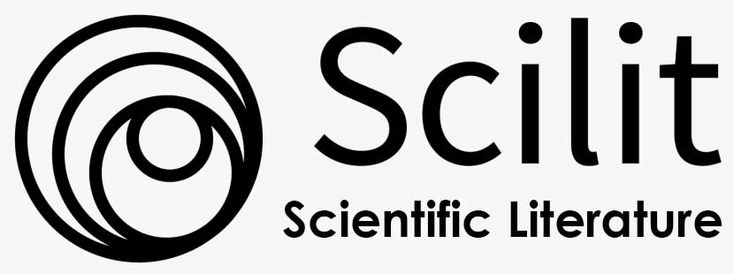MAP OF EDIBLE ARACEAE BASED ON ABIOTIC FACTORS IN GOWA REGENCY, SOUTH SULAWESI
Abstract
This study aims to create a distribution map and find out the relationship between the distribution of edible Araceae and abiotic factors in Gowa Regency, South Sulawesi. Edible Araceae explorations were carried out in 18 sub-districts in November 2016 to September 2018. Edible Araceae which was found to be marked with GPS location, documented with a camera, and measured abiotic factors including altitude, air temperature, soil temperature, light intensity, soil pH, humidity soil, air humidity and soil organic matter. The types of Araceae found included 9 species from 4 genera, namely Xanthosoma sagittifolium (L.) Schott., Xanthosoma nigrum, Colocasia esculenta (L.) Schott., Colocasia esculenta, Alocasia calidora, Alocasia macrorrhiza (L.) Schott. Amorphophallus muelleri Blume, Amorphophallus paeoniifolius, Amorphophallus variabilis Blume. Distribution of edible Araceae in Gowa Regency, South Sulawesi includes coastal areas (<100 m asl), lowlands (100-400 m asl) and highlands (<400 m asl). The distribution of Araceae which is affected by light intensity is Xanthosoma and Alocasia, while the distribution of Colocasia is influenced by altitude, soil organic matter, and soil moisture and Amorphophallus is influenced by soil pH. Araceae conservation strategy compiled based on species data, habitat preference, utilization and distribution of Araceae is expected to be used for the establishment of community business activities for the management of Araceae in each village that has an Araceae distribution.
Keywords
Full Text:
PDFReferences
Alifianto, F., Azrianingsih, R. & Rahardi, B. 2013. Peta persebaran porang (Amorphophallus muelleri Blume) berdasarkan topografi wilayah di Malang Raya. Jurnal Biotropika. 3: 75-79.
Asih, N.P.S., Warseno, T. & Kurniawan, A. 2015. Studi inventarisasi Araceae di Gunung Seraya (Lempuyang), Karangasem, Bali. (1) 3: 521-527.
Brooks, R.T., Keyker-Snowman, T.D. 2008. Forestfloor temperature and relative humidity following timber harvesting in southern New England, USA. Forest Ecology and Management 254: 65-73.
Fleming. R.L., Powers, R.F., Foster, N.W., Kranabetter, J.M., Scott, D.A., Ponder, F.j., Berch, S., Cahapman, W.K., Kabzems, R.D., Ludovici, K.H., Morris, D.M., Dumroese, D.S., Sanborn, P.T., Sanches, F.G., Stone, D.M., Tiarks, A.E. 2006. Effects of organic matter removal, soil compaction, and vegetation control on 5-year seedling performance: a regional comparison ofLong-Term Soil Produktivity sites. Can. J. For. Res. 36: 529-550.
Fontaine, S., Mariotti, A., Abbadie, L. 2003. The priming effect of organic matter: a question of microbial competition. Soil Biology & Biochemistry. 35: 837-843.
Goldsworthy, P.R. & Fisher, N.M. Fisiologi tanaman budidaya tropik. Cetakan kedua. Gadjah Mada University Press.
Jansen, P., C., M., C., Van Der Wilk, & W., L., A., Hetterscheid, 1996. Amorphophallus Blume ex Decaisne. In M. Flach and F. Rumawas (eds.). PROSEA: Plant Resources of South-East Asia. (9) : 34.
Kabupaten Gowa. 2012. Badan Koordinasi Penanaman Modal. Kabupaten Gowa.
Kramer, P. J. and T. T. Kozlowski. 1979. Physiology of woody plants. Academic Press. New York
Lakip pemerintah Kabupaten Gowa. 2013. Akuntabilitas kinerja
Rondon, J.N., Zaidan, L.B.P., Domingos, M., Barbedo, C.J., Figueiredo-Riberito, R.D.C.L. 2006. Vegetative Responses to Temperature and Photoperiod in Sapling of Brazilwood (Caesalpinia echinata Lam., Leguminosae). Braz. J. Plant Physiol 18: 467-474.
Usman. 2017. Kabupaten Gowa dalam angka Gowa regency in figures.
Widiastuti, L., Tohari, E. Sulistyaningsih. 2004. “Pengaruh intensitas cahaya dan kadar daminosida terhadap iklim mikro dan pertumbuhan tanaman krisan dalam pot”. Ilmu Pertanian Vol. 11, No. 2, 2004 : 35-42.
Wilayah Administrasi Kabupaten Gowa. 2013. Kabupaten Gowa
DOI: http://dx.doi.org/10.21776/ub.jeest.2018.005.02.2
Refbacks
- There are currently no refbacks.

This work is licensed under a Creative Commons Attribution 4.0 International License.







